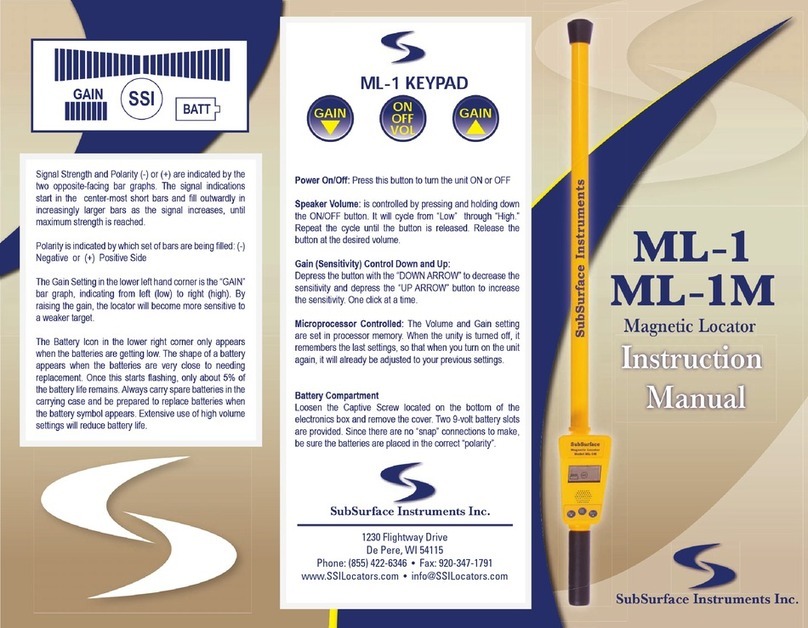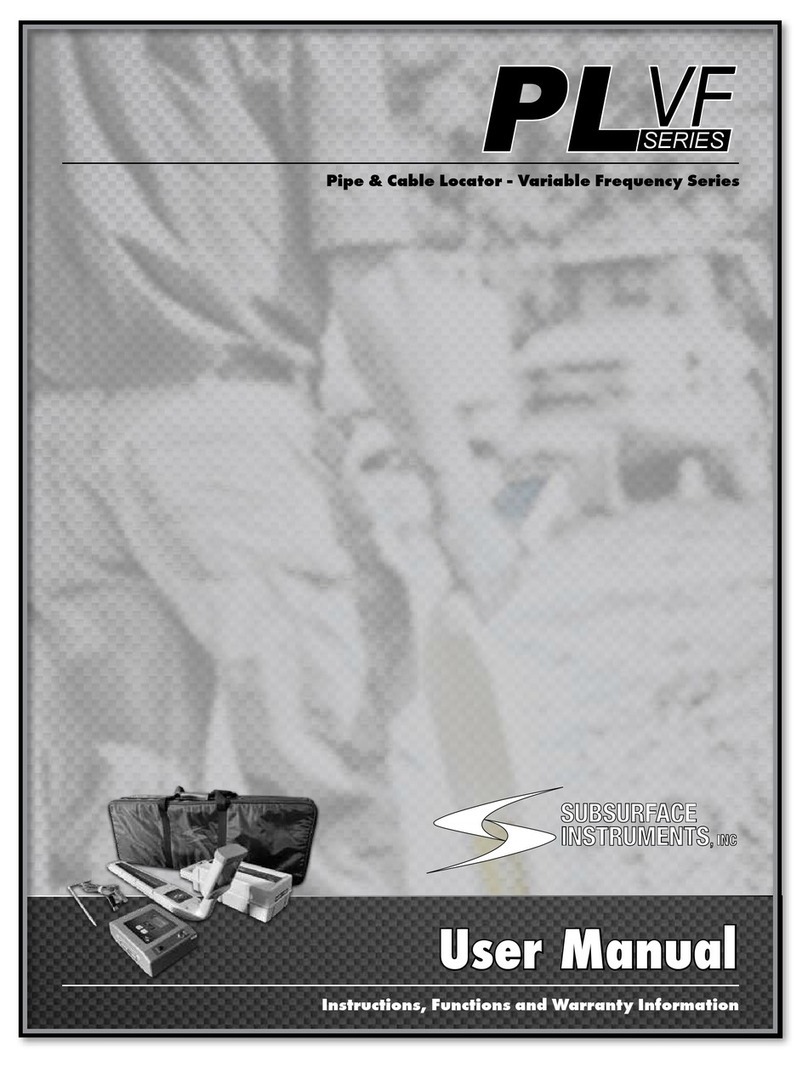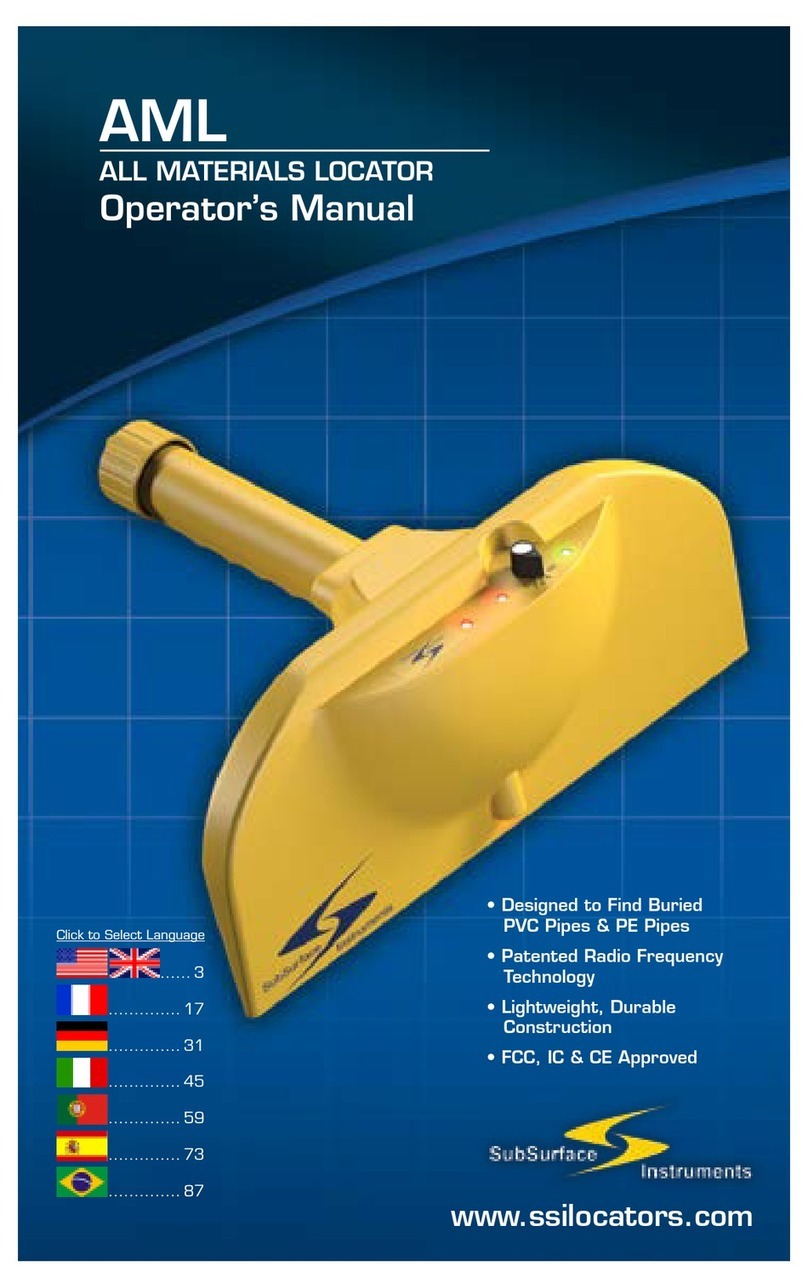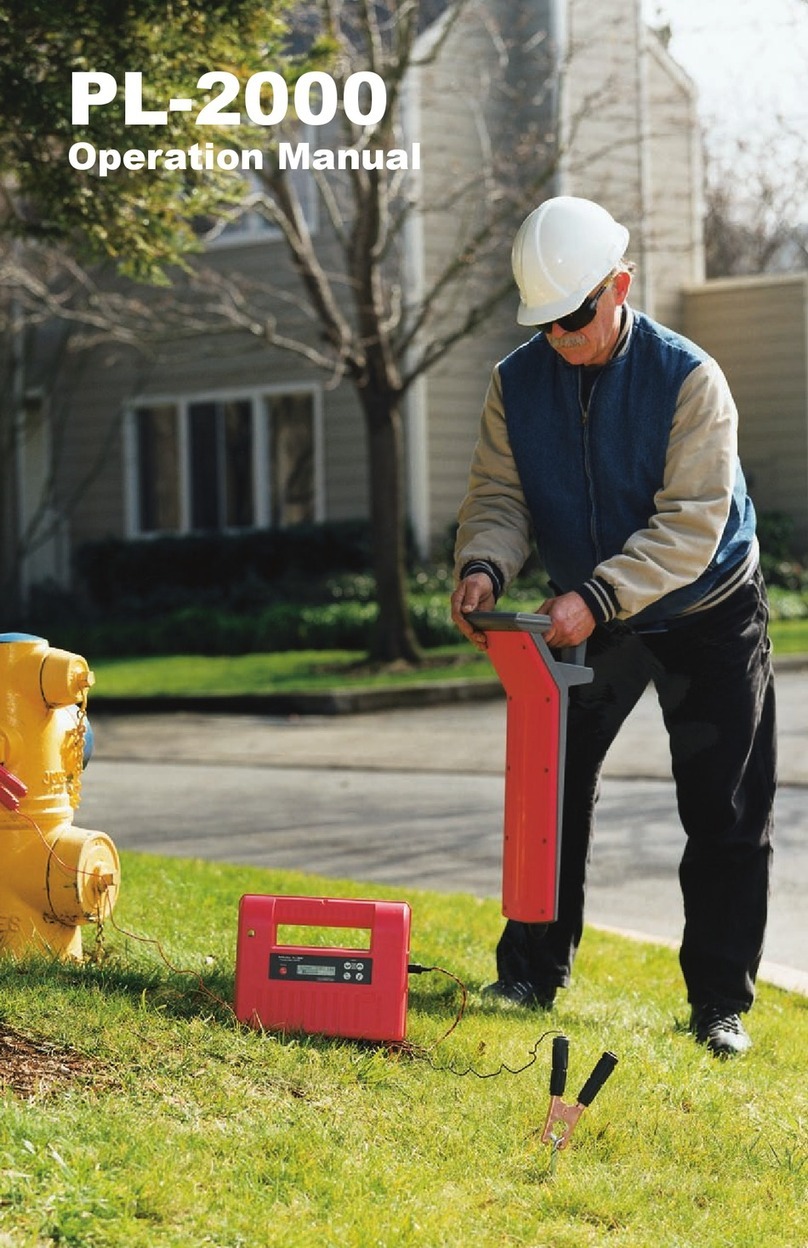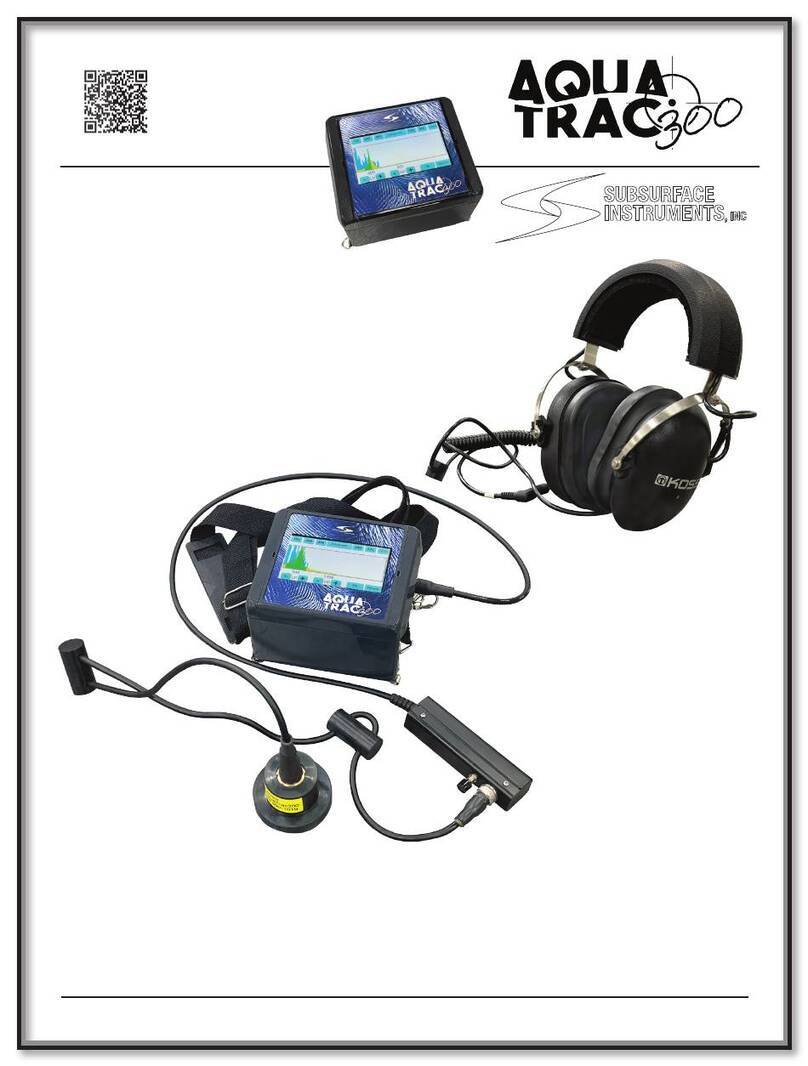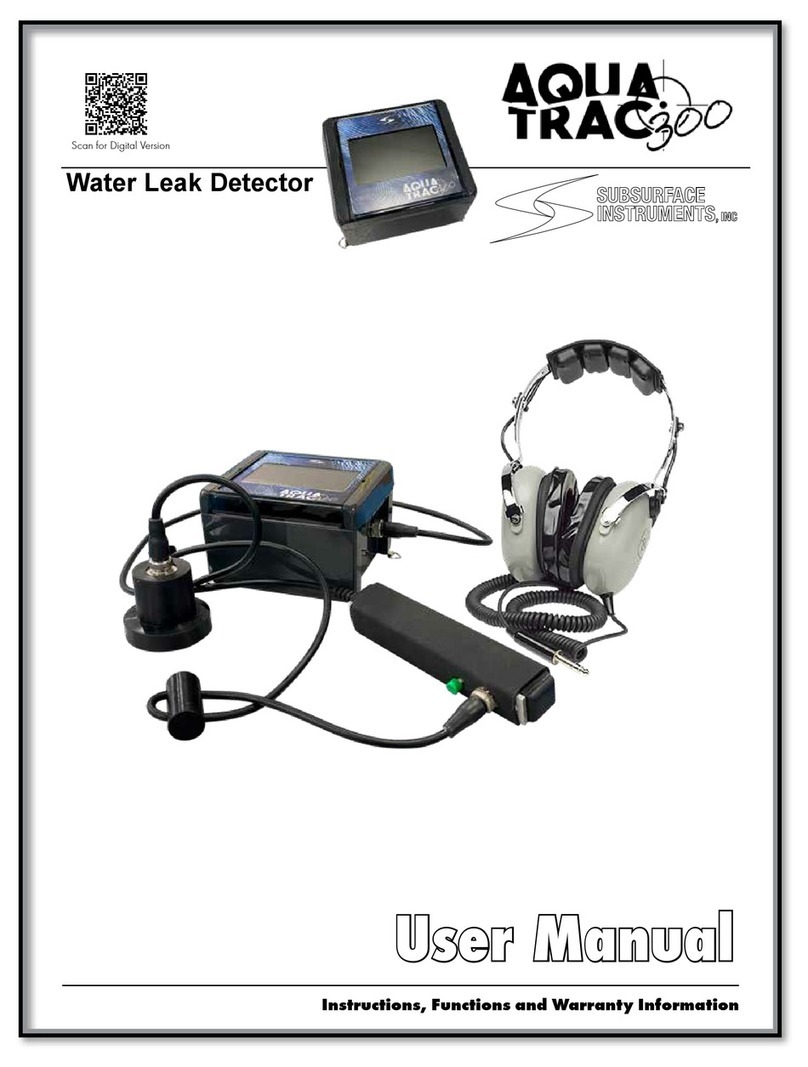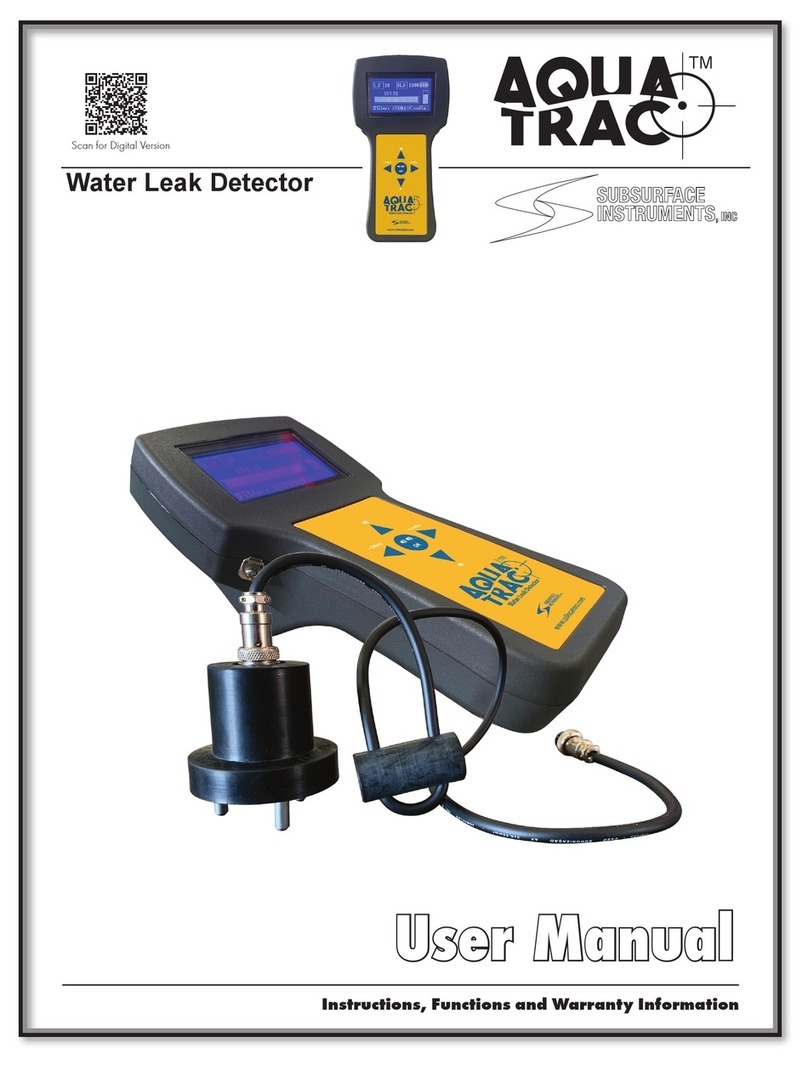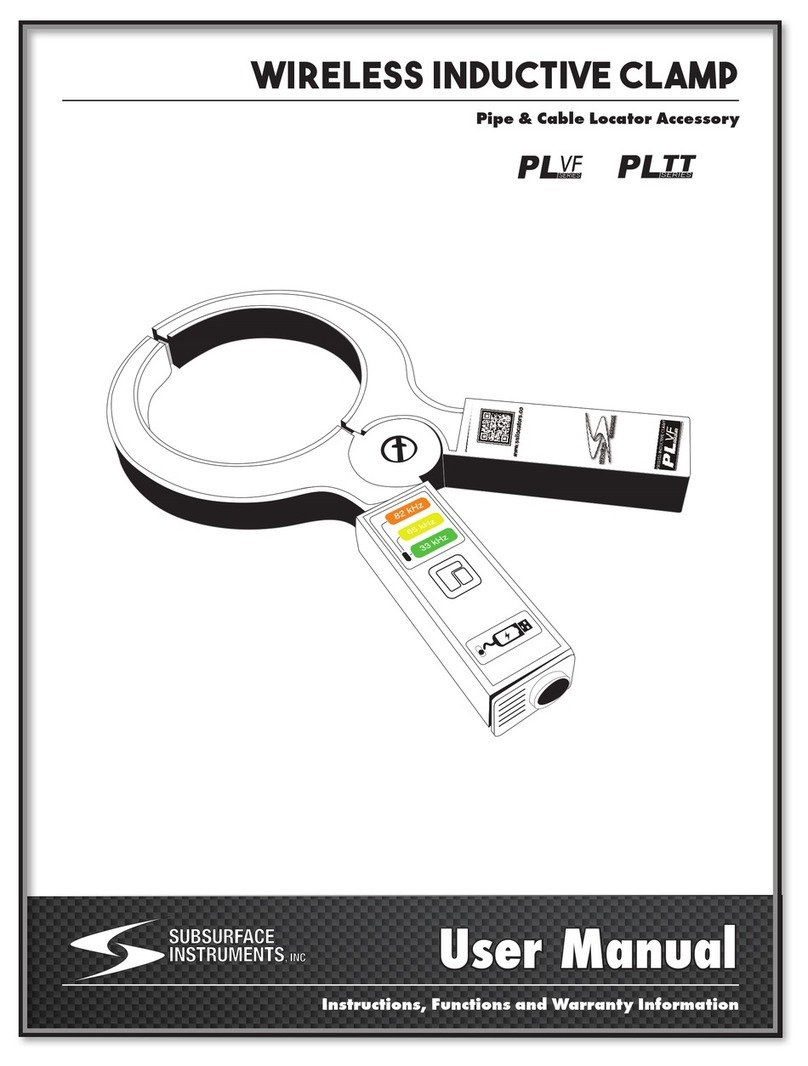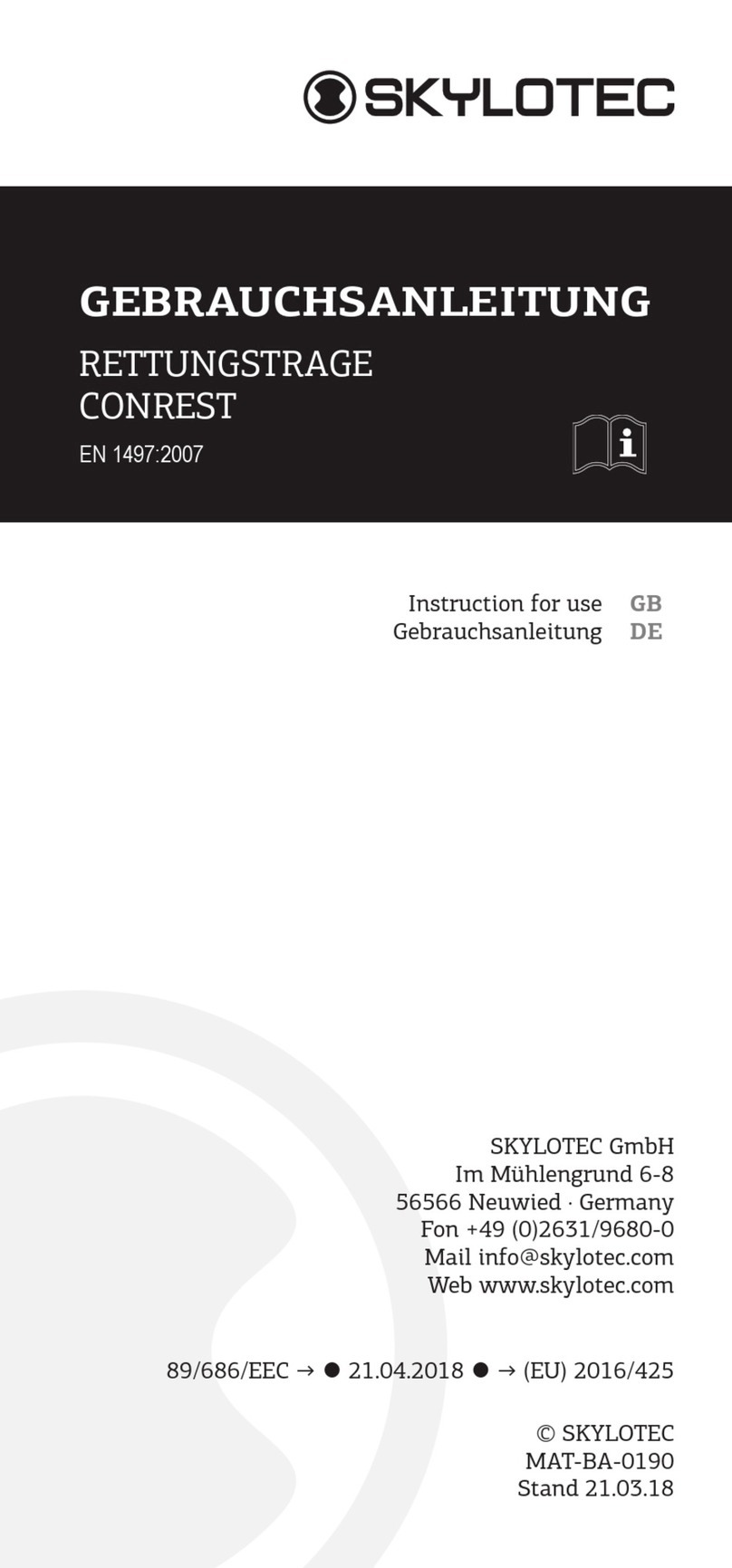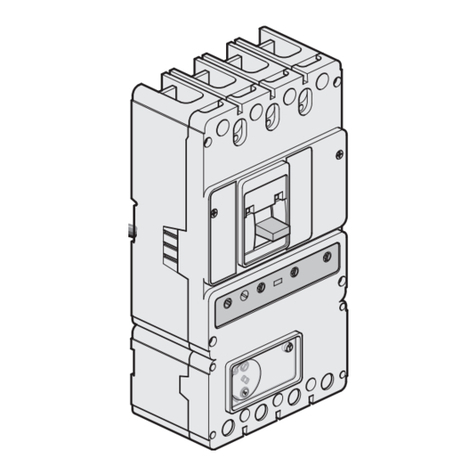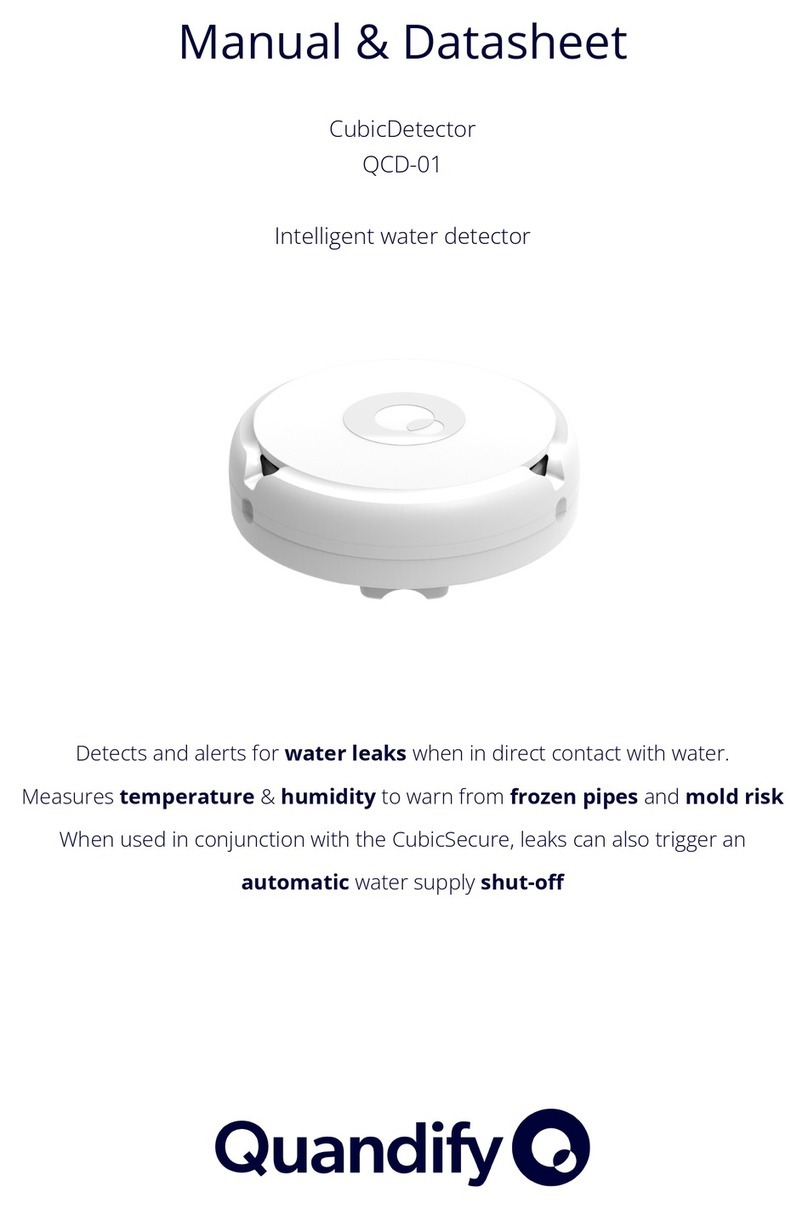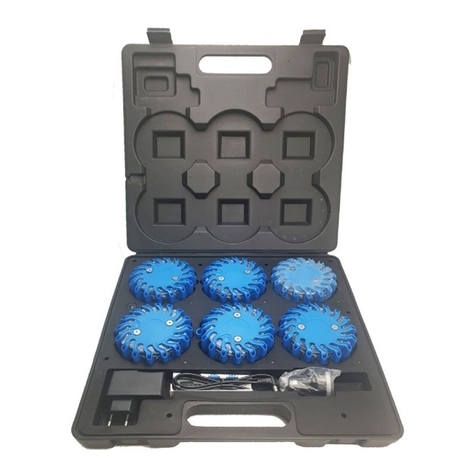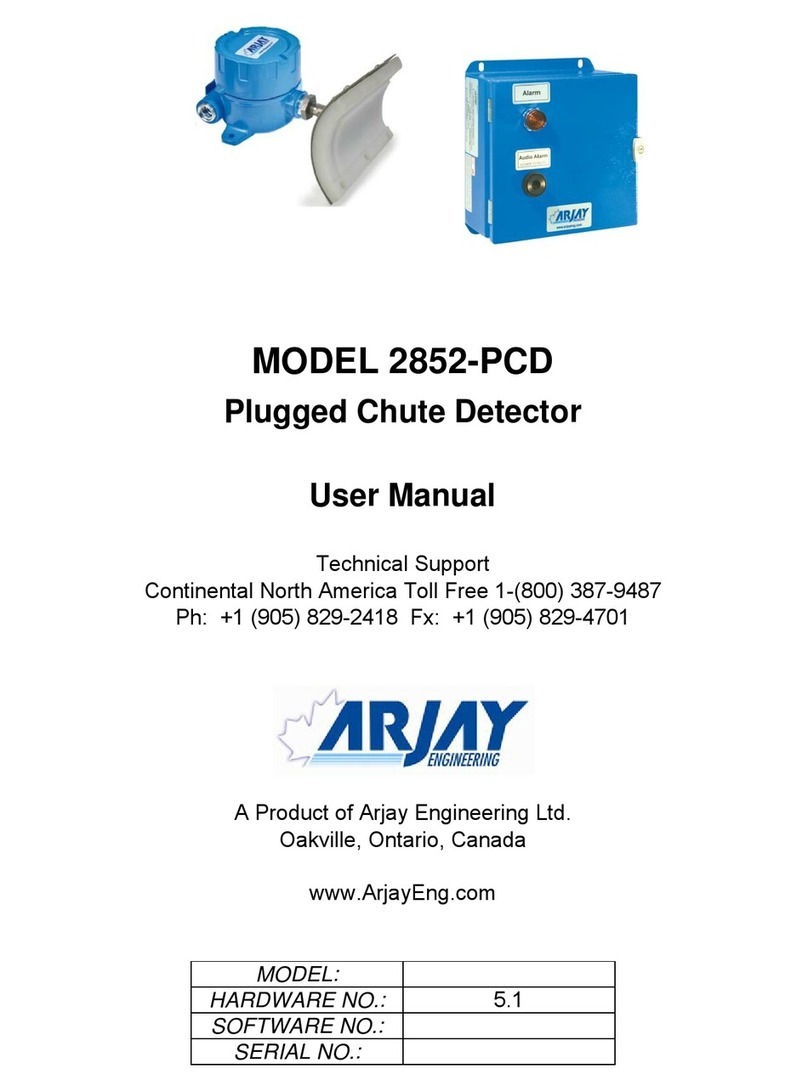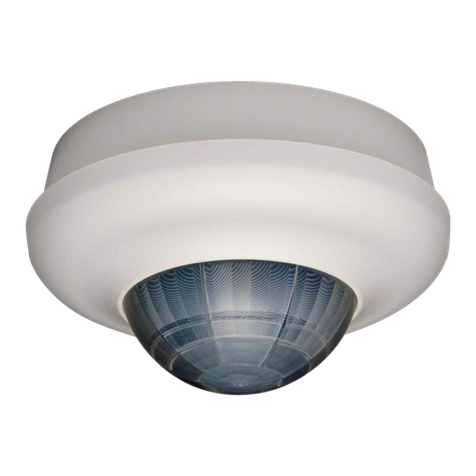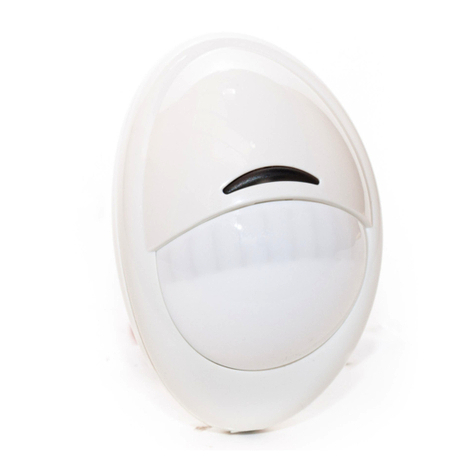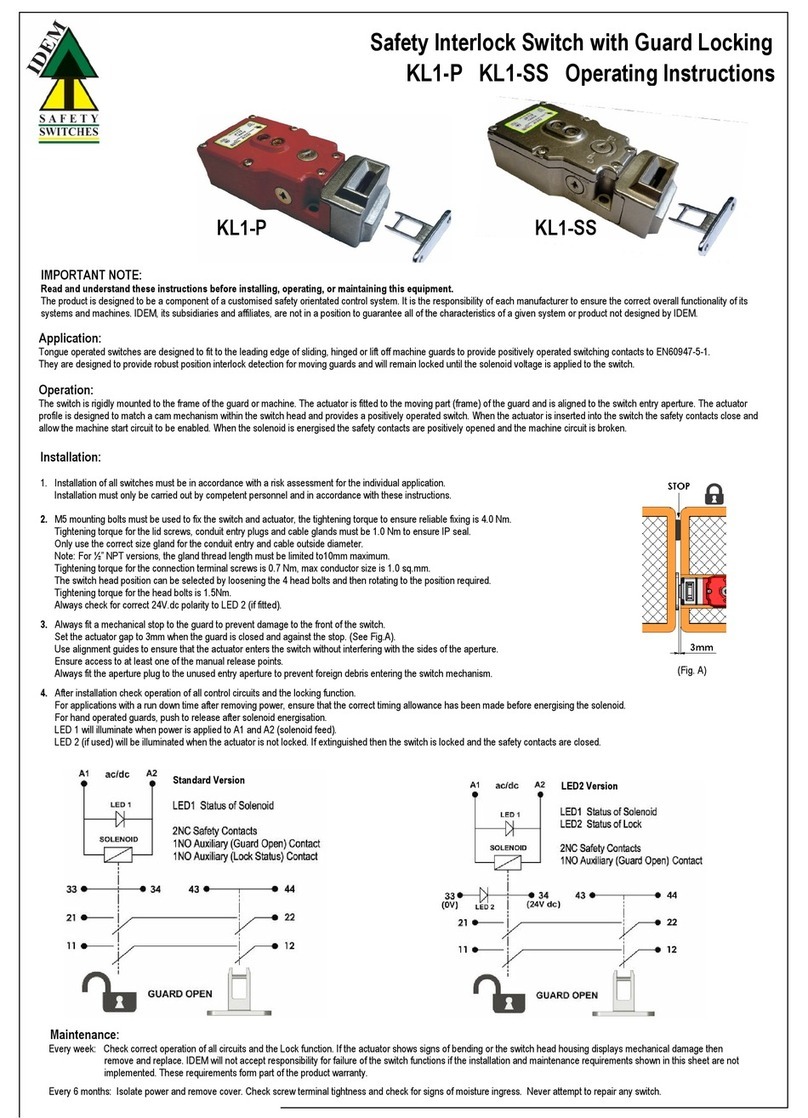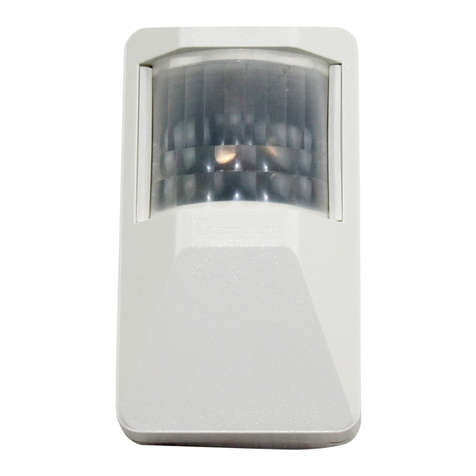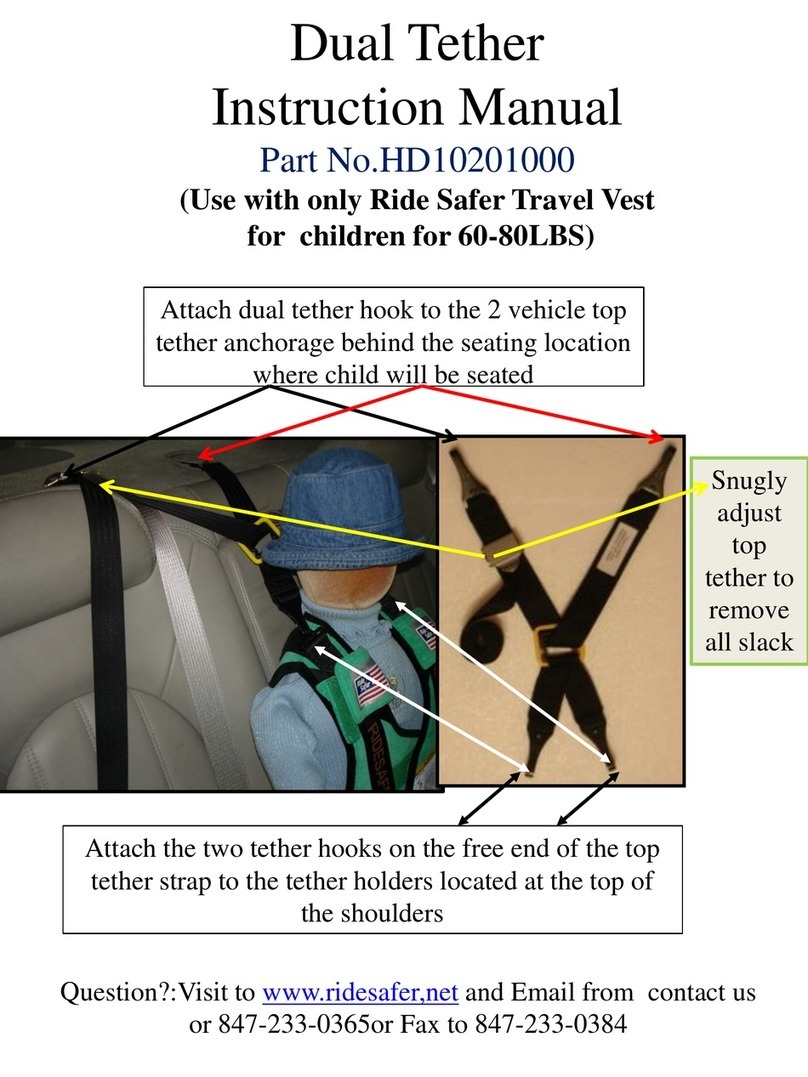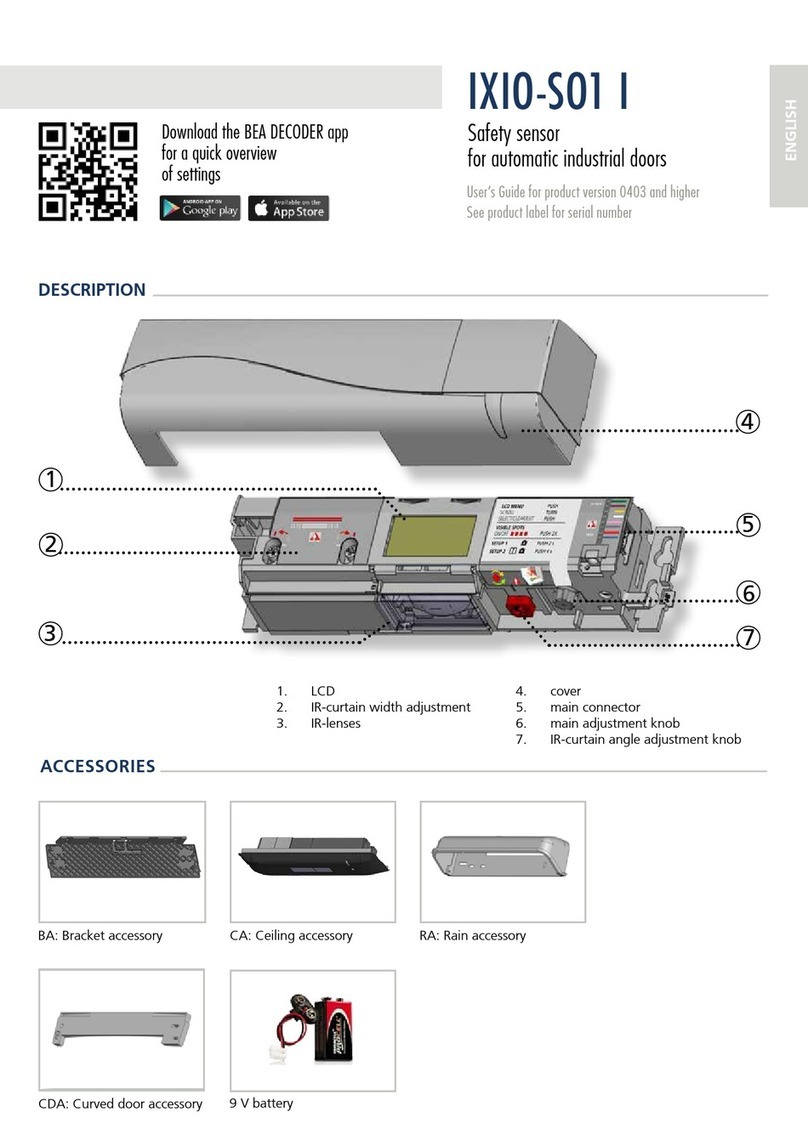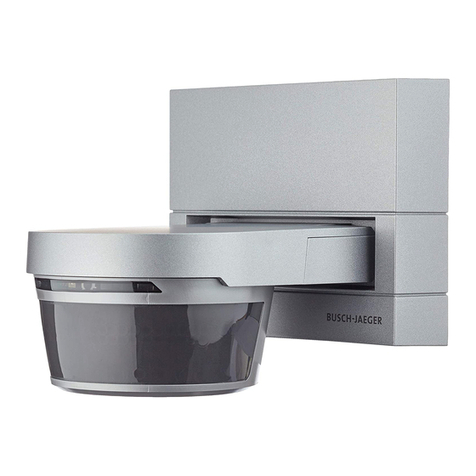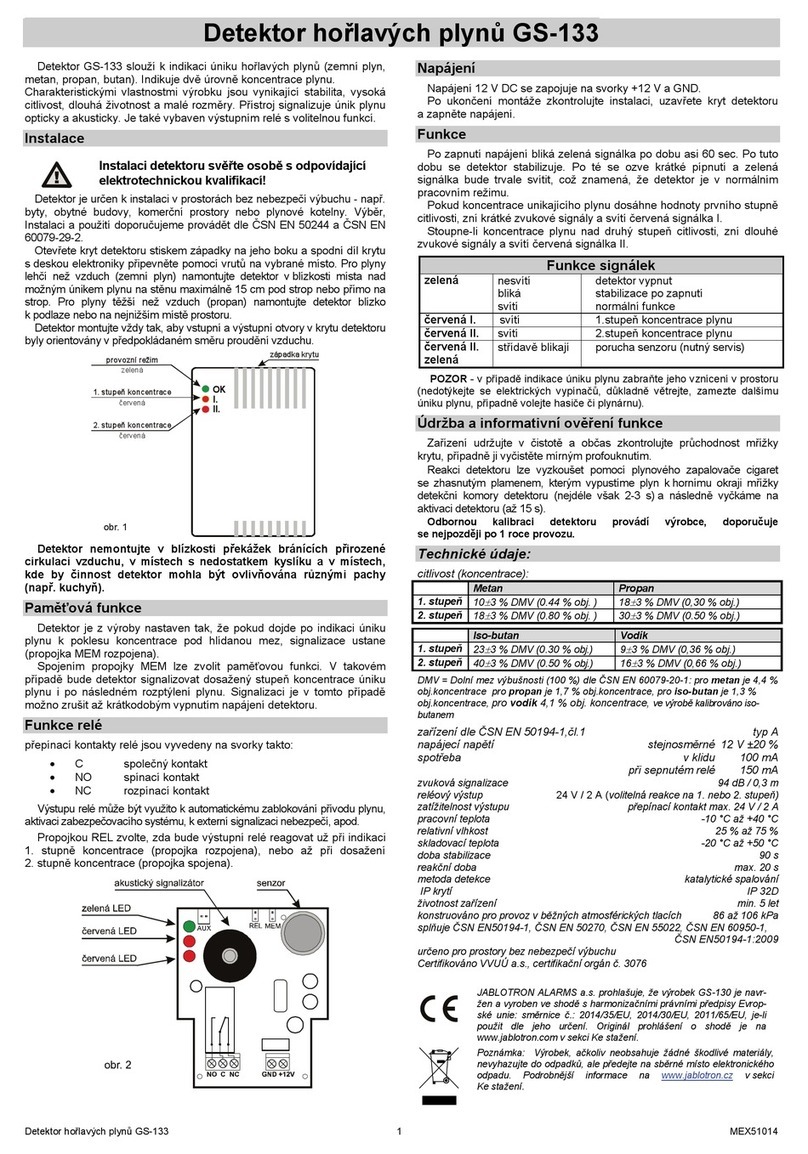
www.ssilocators.com 19
SERIES
The only way to be sure of the depth of a utility is to expose the utility.
At any given time, the depth readout may be inaccurate.
The pl-vf reCeIver can perform digital depth measurement. The depth is displayed at
the top of the LCD display in centimeters or feet and inches. Push button depth is useful
in quickly estimating the depth of the conductor during path locating.
Begin this measurement by locating the path of the cable or pipe. Stay at least 15
feet (4.6 meters) away from the tranSmItter. Pin-point this location as accurately
as possible (see Peak Mode Locating page 15, Null Mode Locating page 16 and
Absolute Signal Strength page 17). Place the Receiver vertically over the conductor
and rest the foot of the locator on the ground. While holding the Receiver vertical,
press and release the DEPTH button. The Receiver will briefly indicate a measurement
is being performed and then display the depth at the top of the LCD display.
Caution must be exercised when using the push button depth feature, as tilted
magnetic fields and adjacent conductors can significantly influence this measurement.
The operator should periodically check for adjacent conductors and tilted magnetic
fields when taking push button depth readings. For information on identifying tilted
magnetic fields, refer to Tilted Magnetic Field Identification and Depth Measurement
45º Method.
Depth is determined by reading the electromagnetic field radiating from the conductor.
The field must be even and circular for the most accurate reading. Interference of this
field may be caused by bends in the cable, faults on the target conductor and signals
radiating from adjacent non-target conductors. Interference will warp the field and
skew the depth reading. The only way to be sure of the depth of a utility is to expose
the utility. At any given time, the depth readout may be inaccurate.
The following are methods and procedures that will aid in increasing the reliability and
testing the accuracy of the depth reading:
• Take depth readings at least 5 yards from cable bends or depth changes. Follow the
cable both forward 5 yards and backward 5 yards, ensuring the line is straight and
there is a consistent signal strength reading.
• Check for non-target conductors within 5 yards of the target cable. Sweep the area
looking for coupled signals into both the tracks and adjacent cables. Adjacent
conductors carrying the locate signal can result in a 50% error rate of the depth
reading.
• Test for interference in the magnetic eld by comparing the PEAK location to the Null
location. The determined cable position by these methods should be within 3 inches
of each other. A greater disparity will indicate interference resulting in inaccurate
depth.
• Place the receiver vertically over the conductor and perpendicular to the conductor.
Rest the foot of the locator on the ground. Take several depth readings moving
slightly across the perpendicular plane to the conductor looking for the lowest depth
reading.
• Once the lowest depth reading is found, take several readings. Each reading should
be within one inch of the other reading. Wider variation will indicate interference
resulting in inaccurate depth.
• Lift the receiver up 12 inches and take a depth reading. The reading should reect
the change in distance accordingly. If not, interference is present resulting in
inaccurate depth.
Verify the depth reading using the triangulation method as described on the next page.
• Peak & Null readings match
• From the Peak/Null location take several
readings across cable.
• Mark position indicated by lowest depth
reading.
• While stationary take multiple depth readings.
• Reading should be consistent.
Depth Reading (A)
Depth Reading (A + 12")
Lift 12"
push button depth




















